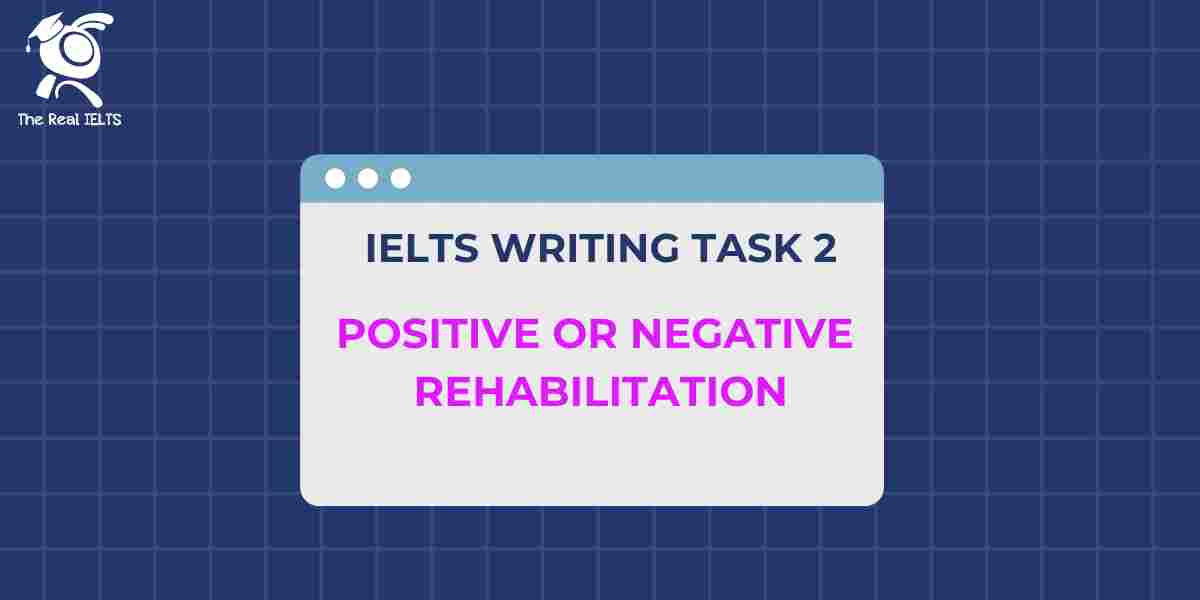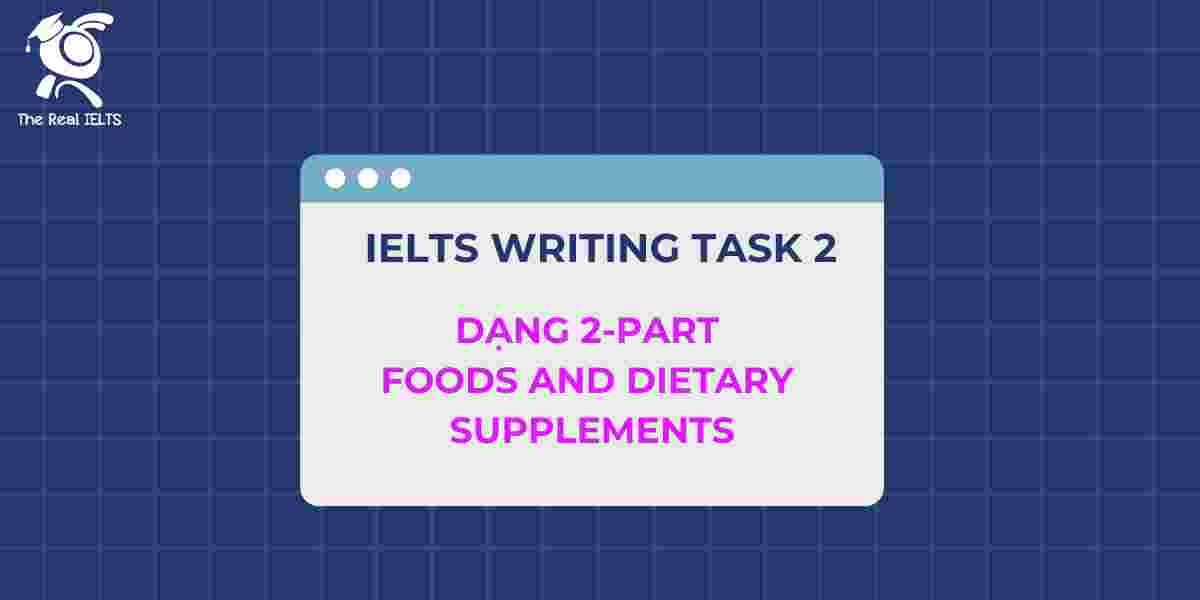“100 câu Paraphrasing về chủ đề City Life trong tiếng Anh” là tài liệu hữu ích giúp bạn nâng cao kỹ năng viết và giao tiếp trong công việc. Nó cũng là một cách luyện thi IELTS phần Writing.
Học lại bài cũ: 100 câu Paraphrasing về chủ đề City Life trong tiếng Anh.
Cấu trúc đồng nghĩa và từ đồng nghĩa Paraphrasing về chủ đề Crime
- The rate of crime – Crime rates (Tỷ lệ tội phạm)
- Increasing – Rising (Gia tăng)
- Globally – Worldwide (Toàn cầu)
- Criminal behavior – Illegal acts (Hành vi tội phạm)
- Stems from – Originates from (Bắt nguồn từ)
- Justice system – Law enforcement (Hệ thống tư pháp)
- Reduce crime – Lower crime rates (Giảm tội phạm)
- Faces challenges – Encounters difficulties (Đối mặt với thử thách)
- Poverty – Financial hardship (Nghèo đói)
- Contribute to – Lead to (Góp phần vào)
- Juvenile crime – Youth crime (Tội phạm vị thành niên)
- Growing problem – Increasing issue (Vấn đề ngày càng gia tăng)
- Organized crime – Gang crime (Tội phạm có tổ chức)
- National security – Public safety (An ninh quốc gia)
- Driven by – Motivated by (Bị thúc đẩy bởi)
- Desperation – Hopelessness (Sự tuyệt vọng)
- Violent crime – Violent offense (Tội phạm bạo lực)
- Impacts – Affects (Tác động)
- Deeply – Profoundly (Sâu sắc)
- Cybercrime – Online crime (Tội phạm mạng)
- Prevalent – Common (Phổ biến)
- Goes unpunished – Lacks repercussions (Không bị trừng phạt)
- Prevention – Deterrence (Phòng ngừa)
- Community involvement – Public participation (Sự tham gia của cộng đồng)
- Enable – Allow (Cho phép)
- Forms of crime – Types of crime (Hình thức tội phạm)
- Hidden crime – Underreported crime (Tội phạm tiềm ẩn)
- Requires reform – Needs transformation (Yêu cầu cải cách)
- Reducing recidivism – Lowering reoffending rates (Giảm tái phạm tội)
- Environmental factors – Social surroundings (Yếu tố môi trường)
- Education – Learning (Giáo dục)
- Physically and mentally – Bodily and psychologically (Về thể chất và tinh thần)
- Correlated – Linked (Có liên quan)
- Harsher punishments – Stricter penalties (Các hình phạt nghiêm khắc hơn)
- Committed out of necessity – Driven by need (Thực hiện vì cần thiết)
- Address root causes – Tackle underlying issues (Giải quyết nguyên nhân gốc rễ)
- Mental health issues – Psychological challenges (Vấn đề sức khỏe tâm thần)
- Typically – Generally (Thông thường)
- Fluctuate with – Depend on (Thay đổi theo)
- Insight into patterns – Understanding trends (Hiểu rõ về các xu hướng)
- Assets – Property (Tài sản)
- Curb through mentorship – Prevent via guidance (Ngăn chặn qua hướng dẫn)
- Not only victims – More than just victims (Không chỉ là các nạn nhân)
- The war on drugs – Anti-drug campaigns (Cuộc chiến chống ma túy)
- Aids in reducing – Helps to lower (Giúp giảm)
- Accelerates – Speeds up (Tăng tốc)
- Firearm regulation – Gun control (Kiểm soát vũ khí)
- Economic recessions – Financial downturns (Suy thoái kinh tế)
- Require long-term support – Need lasting assistance (Cần hỗ trợ dài hạn)
- Takes advantage of – Exploits (Lợi dụng)
- Filled due to – Overcrowded because of (Đầy do)
- Public views on crime – Society’s perception of crime (Quan điểm của công chúng về tội phạm)
- Focus on rehabilitation – Prioritize recovery (Tập trung vào phục hồi)
- Causes and effects – Reasons and impacts (Nguyên nhân và ảnh hưởng)
- Mental health support – Psychological assistance (Hỗ trợ sức khỏe tâm thần)
- Social disparity – Economic inequality (Bất bình đẳng xã hội)
- Harms communities – Affects neighborhoods (Gây hại cho cộng đồng)
- Reflect reality – Mirror actual situations (Phản ánh thực tế)
- Drug cartels – Drug trafficking organizations (Băng đảng buôn ma túy)
- Assists in solving – Helps resolve (Giúp giải quyết)
- Contribute to the solution – Play a part in solving (Góp phần vào giải pháp)
- Modern crime – Contemporary crime (Tội phạm hiện đại)
- Generational impacts – Long-term effects (Ảnh hưởng dài hạn)
- Rooted in hate – Motivated by discrimination (Bắt nguồn từ hận thù)
- Must evolve – Need to adapt (Phải phát triển)
- Never reported – Remain unreported (Không bao giờ được báo cáo)
- Noteworthy form of – Significant type of (Hình thức đáng chú ý của)
- Affects both rural and urban – Impacts both cities and countryside (Ảnh hưởng đến cả vùng nông thôn và thành thị)
- Is often discussed – Frequently debated (Thường được thảo luận)
- Plays a role in – Is crucial to (Đóng vai trò trong)
- Target marginalized communities – Affect vulnerable groups (Ảnh hưởng đến các nhóm dễ bị tổn thương)
- Impacts the likelihood of – Affects the probability of (Ảnh hưởng đến khả năng)
- Demand a multifaceted approach – Require comprehensive solutions (Đòi hỏi cách tiếp cận đa chiều)
- Increases the risk of – Raises the likelihood of (Tăng nguy cơ)
- Curbing cybercrime – Preventing online crime (Ngăn chặn tội phạm mạng)
- Struggle with mental health – Face psychological issues (Gặp khó khăn với sức khỏe tâm thần)
- Habitual offenders – Repeat criminals (Người phạm tội thường xuyên)
- Steer away from crime – Divert from illegal acts (Chuyển hướng khỏi tội phạm)
- Shapes public views – Influences societal perception (Định hình quan điểm công chúng)
- Differ based on – Vary depending on (Khác nhau tùy thuộc vào)
- Begins with education – Starts with learning (Bắt đầu từ giáo dục)
- Assists in lowering – Helps to reduce (Giúp giảm)
- Undermines community stability – Weakens neighborhood unity (Làm suy yếu sự ổn định cộng đồng)
- Social problem – Societal issue (Vấn đề xã hội)
- Influences criminal behavior – Affects illegal actions (Ảnh hưởng đến hành vi tội phạm)
- Reduce repeat offenses – Lower recidivism (Giảm tái phạm tội)
- Contribute to many crimes – Lead to multiple offenses (Góp phần vào nhiều tội phạm)
- Affects incarceration rates – Impacts jail population (Ảnh hưởng đến tỷ lệ giam giữ)
- Deter crime – Discourage illegal acts (Ngăn chặn tội phạm)
- Extends to families – Impacts relatives (Ảnh hưởng đến gia đình)
- Instead of jail time – Rather than imprisonment (Thay vì thời gian tù)
- Thrives in corrupt areas – Prospers in dishonest regions (Phát triển ở các khu vực tham nhũng)
- Demands thorough support – Requires comprehensive help (Đòi hỏi sự hỗ trợ kỹ lưỡng)
- Hard to prosecute – Difficult to charge (Khó truy tố)
- Must change to address – Needs to evolve to tackle (Phải thay đổi để giải quyết)
- Aids in crime-fighting – Assists in combating crime (Hỗ trợ trong việc chống tội phạm)
- Deter juvenile crime – Prevent youth delinquency (Ngăn chặn tội phạm vị thành niên)
- Laws and social norms – Legal regulations and cultural expectations (Luật pháp và chuẩn mực xã hội)
- Can trigger higher crime – May lead to increased crime (Có thể gây ra tội phạm cao hơn)
- Agency collaboration – Interagency cooperation (Hợp tác giữa các cơ quan)
100 câu Paraphrasing về chủ đề Crime
- Crime rates are steadily increasing globally.
- Criminal behavior often stems from societal issues.
- The justice system aims to reduce crime but faces many challenges.
- Poverty can contribute to higher crime rates.
- Juvenile crime remains a growing problem in many cities.
- Organized crime poses significant threats to national security.
- Many crimes are driven by economic desperation.
- Violent crime impacts communities deeply.
- Cybercrime is becoming increasingly prevalent.
- White-collar crime often goes unpunished.
- Crime prevention requires community involvement.
- Technology has enabled new forms of crime.
- Domestic violence is a hidden crime in many societies.
- The criminal justice system requires reform.
- Rehabilitation is essential for reducing recidivism.
- Crime can be influenced by one’s environment.
- Education is a key factor in preventing crime.
- Crime affects victims both physically and mentally.
- Crime and poverty are often correlated.
- Harsher punishments may not reduce crime.
- Many crimes are committed out of necessity.
- Society needs to address root causes of crime.
- Mental health issues can lead to criminal acts.
- Urban areas often see higher crime rates.
- Crime rates are impacted by economic conditions.
- Crime data helps in understanding patterns and trends.
- Crimes against property are common worldwide.
- Youth crime can be prevented through mentorship.
- Crime doesn’t only harm the victims but society as a whole.
- The war on drugs has affected crime statistics.
- Community policing can help reduce crime.
- Technology helps in solving crimes faster.
- Gun control is a controversial topic in crime prevention.
- Economic downturns often lead to crime spikes.
- Crime victims require long-term support.
- Organized crime exploits weaknesses in the law.
- Prisons are overcrowded due to crime rates.
- Public perception of crime can impact policy.
- Many believe punishment should focus on rehabilitation.
- Crime has various societal causes and consequences.
- Victims of crime often need mental health support.
- Crime and inequality are often interconnected.
- Gang violence affects communities on many levels.
- Crime statistics may not always reflect reality.
- The rise of drug trafficking impacts global crime.
- Criminal profiling aids in solving cases.
- Juvenile detention centers are part of the crime solution.
- Social media plays a role in modern crime.
- Crime can have generational impacts.
- Some crimes are motivated by hate and discrimination.
- Law enforcement must adapt to modern crime.
- Many crimes go unreported each year.
- Fraud is a significant type of white-collar crime.
- Crime impacts both urban and rural areas.
- Rehabilitation over punishment is debated in crime policy.
- Public awareness is crucial to crime prevention.
- Hate crimes impact marginalized communities the most.
- Socioeconomic status can affect crime likelihood.
- Crime solutions require a multi-faceted approach.
- Corruption contributes to crime rates.
- Cybersecurity is essential to prevent cybercrime.
- Many criminals face mental health challenges.
- Repeat offenders increase crime rates.
- Youth programs help divert from crime.
- The media impacts public perception of crime.
- Crime trends vary by region and country.
- Crime prevention starts with education.
- Surveillance helps reduce crime in public areas.
- Crime disrupts community stability.
- Crime is a social issue with economic impacts.
- Social factors often drive criminal behavior.
- Rehabilitation programs lower crime rates.
- Alcohol and drugs influence many crimes.
- Crime legislation impacts incarceration rates.
- Police presence can deter crime in neighborhoods.
- Crime-related trauma affects entire families.
- Rehabilitation over incarceration can aid in crime reduction.
- Organized crime thrives in areas of high corruption.
- Rehabilitation requires comprehensive support.
- Cybercrime is difficult to prosecute internationally.
- Laws must evolve to address new crime types.
- Surveillance technology aids in crime prevention.
- Community programs deter youth crime.
- Crime is influenced by societal norms and laws.
- High unemployment often leads to increased crime.
- Crime prevention requires collaboration among agencies.
- Criminal justice reform can reduce prison populations.
- Community outreach helps prevent gang-related crime.
- Surveillance cameras reduce crime in certain areas.
- Domestic violence needs more legal attention.
- Crime impacts the economic development of cities.
- Crime often has underlying psychological causes.
- Recidivism is a challenge in reducing crime.
- Police training influences crime management.
- Technology is used to both commit and prevent crime.
- Social inequality is a driver of criminal activity.
- Public support is essential in crime-solving efforts.
- Cybercrimes impact both individuals and organizations.
- Victims of crime need support systems.
- Crime rates are a concern for governments worldwide.
Đáp án viết lại câu
- The rate of crime is steadily increasing globally.
- Criminal behavior often originates from societal issues.
- Law enforcement aims to reduce crime but faces many challenges.
- Poverty plays a role in higher crime rates.
- Juvenile delinquency remains a growing problem in many cities.
- Organized crime threatens national security.
- Many crimes stem from economic desperation.
- Violent offenses impact communities deeply.
- Cybercrime is increasingly common.
- White-collar crime often lacks repercussions.
- Crime prevention depends on community involvement.
- Advances in technology have enabled new forms of crime.
- Domestic violence is an underreported crime in many societies.
- The criminal justice system needs transformation.
- Rehabilitation is key to reducing recidivism.
- Crime is influenced by one’s environment.
- Access to education is a key factor in preventing crime.
- Crime harms victims both physically and mentally.
- Crime and financial hardship are often correlated.
- Stricter penalties may not reduce crime.
- Many crimes are driven by necessity.
- Society needs to tackle the underlying causes of crime.
- Mental health challenges can lead to criminal acts.
- Urban areas typically see higher crime rates.
- Crime rates fluctuate with economic conditions.
- Crime data provides insight into patterns and trends.
- Crimes against assets are common worldwide.
- Youth crime can be curbed through mentorship.
- Crime affects not only victims but society as a whole.
- The war on drugs has impacted crime statistics.
- Community policing aids in reducing crime.
- Technology accelerates crime-solving.
- Firearm regulation is a controversial topic in crime prevention.
- Economic recessions often lead to crime spikes.
- Crime victims often need long-term support.
- Organized crime takes advantage of weaknesses in the law.
- Prisons are often filled due to crime rates.
- Public views on crime can impact policy.
- Many believe penalties should focus on rehabilitation.
- Crime has multiple causes and effects on society.
- Victims of crime require mental health support.
- Crime and social disparity are often interconnected.
- Gang violence harms communities on many levels.
- Crime statistics do not always reflect reality.
- The rise of drug cartels impacts global crime.
- Criminal profiling assists in solving cases.
- Juvenile detention centers contribute to the crime solution.
- Social media influences modern crime.
- Crime can have lasting generational impacts.
- Some crimes are rooted in hate and discrimination.
- Law enforcement must evolve to address modern crime.
- Many crimes are never reported each year.
- Fraud is a noteworthy form of white-collar crime.
- Crime affects both rural and urban areas.
- Rehabilitation over punishment is often discussed in crime policy.
- Public awareness plays a role in crime prevention.
- Hate crimes target marginalized communities the most.
- Socioeconomic status impacts the likelihood of crime.
- Crime solutions demand a multifaceted approach.
- Corruption increases the risk of crime.
- Cybersecurity is critical to curbing cybercrime.
- Many criminals struggle with mental health challenges.
- Habitual offenders increase crime rates.
- Youth programs help steer away from crime.
- The media shapes public views on crime.
- Crime trends differ based on region and country.
- Crime prevention begins with education.
- Surveillance assists in lowering crime in public areas.
- Crime undermines community stability.
- Crime is a social problem with economic impacts.
- Social factors influence criminal behavior.
- Rehabilitation programs reduce repeat offenses.
- Alcohol and drugs contribute to many crimes.
- Crime legislation affects incarceration rates.
- Police presence can deter crime in neighborhoods.
- Crime-related trauma extends to families.
- Rehabilitation instead of jail time can aid in crime reduction.
- Organized crime thrives in corrupt areas.
- Rehabilitation demands thorough support.
- Cybercrime is hard to prosecute internationally.
- Laws must change to address new crime types.
- Surveillance technology aids in crime-fighting.
- Community programs deter juvenile crime.
- Crime is influenced by laws and social norms.
- High unemployment can trigger higher crime.
- Crime prevention requires agency collaboration.
- Criminal justice reform helps reduce prison crowding.
- Community outreach combats gang violence.
- Surveillance cameras deter crime in some areas.
- Domestic violence needs greater legal focus.
- Crime impacts city economic development.
- Crime often has psychological roots.
- Recidivism poses challenges to reducing crime.
- Police training affects crime management.
- Technology is used both to commit and combat crime.
- Social inequality drives criminal behavior.
- Public engagement is crucial in crime-solving.
- Cybercrimes impact both people and businesses.
- Victims of crime need strong support systems.
- Crime rates remain a concern for governments worldwide.















